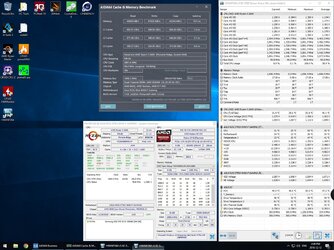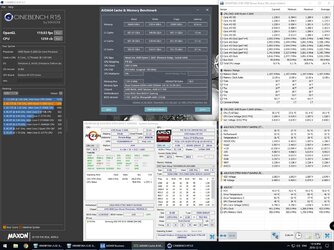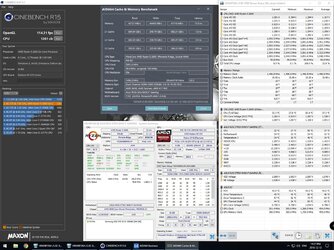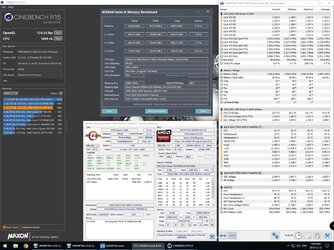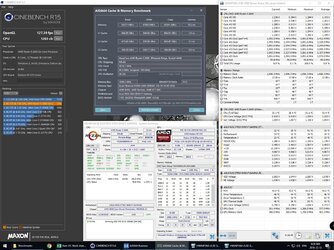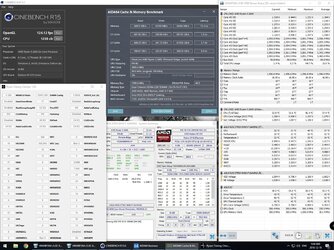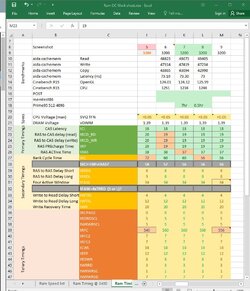I'm working my way through the RAM OC process. I'm right at the beginning after restarting, i'm working my from 3000mhz XMP trying different speeds while leaving everything else at XMP specs.
Without loosening the timings it appears that 3030 (BLCK=101) is the highest speed I can go with XMP timings of 16-18-18-38.
I can move up to 3400 with timings at 18-20-20-54 and the benchmarks seem quite happy.
I will come back and edit this post with more details shortly, but answer me a few questions.
1) AIDA64 cachemem test shows bandwidth and latency. How to I determine my theoretical maximum and efficiency?
2) Organizationally, any advice on taking screenshots, storing, name files?
3) Tracking changes. Has anyone made a truth table spreadsheet to work through and check things off at different speeds to help keep track of this wonderful process?
For the first high-speed testing I was able to use memtest86 to narrow my window, and using aida64 I have a good rough idea of this run is less than that run (45k, 44k, 42k ~70ns is a good run), but I am too systematic for that and i'm jumping around because I'm not tracking changes well.
EDIT:
Here's my system:
AMD Ryzen 2600 @ 4.0Ghz w/ Captain 240mm AIO
Asus Rog STRIX B450-F Gaming
16GB T-Force Vulcan 3000mhz CL16-18-18-38 TLRED416G3000HC16CDC01
MSI Radeon RX570 8gb
512GB Samsung EVO 970 M2
EVGA G3 650W Gold+
Starting point benchmark is posted below.
Without loosening the timings it appears that 3030 (BLCK=101) is the highest speed I can go with XMP timings of 16-18-18-38.
I can move up to 3400 with timings at 18-20-20-54 and the benchmarks seem quite happy.
I will come back and edit this post with more details shortly, but answer me a few questions.
1) AIDA64 cachemem test shows bandwidth and latency. How to I determine my theoretical maximum and efficiency?
2) Organizationally, any advice on taking screenshots, storing, name files?
3) Tracking changes. Has anyone made a truth table spreadsheet to work through and check things off at different speeds to help keep track of this wonderful process?
For the first high-speed testing I was able to use memtest86 to narrow my window, and using aida64 I have a good rough idea of this run is less than that run (45k, 44k, 42k ~70ns is a good run), but I am too systematic for that and i'm jumping around because I'm not tracking changes well.
EDIT:
Here's my system:
AMD Ryzen 2600 @ 4.0Ghz w/ Captain 240mm AIO
Asus Rog STRIX B450-F Gaming
16GB T-Force Vulcan 3000mhz CL16-18-18-38 TLRED416G3000HC16CDC01
MSI Radeon RX570 8gb
512GB Samsung EVO 970 M2
EVGA G3 650W Gold+
Starting point benchmark is posted below.
Last edited:
